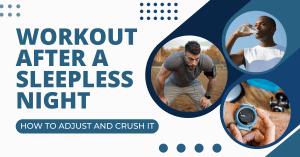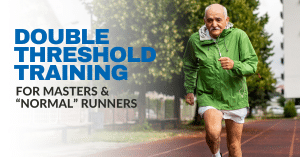We have looked at the ins and outs of using a heart rate monitor to track your training in our article a few months ago.
It’s no mystery that checking your heart rate during exercise is a reliable way to gauge your effort level when you’re working out.
It get’s better:
You might be surprised to learn that a simple heart rate measurement can predict your risk of cardiovascular disease and even premature death!
The measurement is called your heart rate recovery.
How does Heart Rate Recovery Predict my Risk of Cardiovascular Disease?
It is defined as the rate at which your heart rate drops after a bout of intense exercise. The predictive power of heart rate recovery has been tested and confirmed by several large-scale, long-term scientific studies.
Abnormal heart rate recovery as a predictor
One such study, published in 2001 by Junko Wantabe and a team of doctors at the Cleveland Clinic, followed a group of over 5,400 subjects for an average of three years.1
At the outset of the study, every patient underwent a maximal exercise test, usually on a treadmill. Once each subject had reached their maximum level of exertion, the researchers noted the subject’s heart rate, then instructed them to immediately lie down. After sixty seconds of rest, the researchers measured the subject’s heart rate again.
By subtracting these two numbers, the researchers determined each subject’s heart rate recovery over the first minute following maximal exercise.
An “abnormal” heart rate recovery was defined as a heart rate recovery of 18 beats per minute or less. Fifteen percent of the patients in the study fell into this category.
Over the course of the study, 190 people died.
Those who passed away (of any cause) were almost four times as likely to belong to the group with the abnormally low heart rate recovery.
This is shocking:
Even after the researchers performed statistical analysis to control for factors known to affect risk of death, like age, sex, fitness level, and presence of cardiovascular disease, people with an abnormal heart rate recovery were still over twice as likely to die as those with a normal heart rate recovery.
What if I do not have previous history of cardiovascular disease?
This first study by Wantabe et al. had some flaws: many of the subjects weren’t entirely healthy (one in three had coronary artery disease), and the follow-up time was not particularly long.
To rectify these problems, many of the same researchers studied another group of over 5,000 people; in this case, all subjects had no evidence of cardiovascular disease at the study’s outset.2
This second study followed a similar protocol, except that the exercise test ended at only 85-90% of a subject’s predicted maximum heart rate.
For a runner, that’d be equivalent to roughly 10k or half marathon pace. This time, the researchers also tracked heart rate recovery after two minutes of rest following exercise instead of one.
Over the course of twelve years, 312 people died.
Again, those with an abnormal heart rate recovery (defined in this case as a drop of 42 beats per minute or less after two minutes of rest following exercise) were at greater risk: they were 2.6 times more likely to die as those with normal heart rate recovery.
As with the first study, this relationship remained even after using statistical analysis to control for typical risk factors.
Even with all else equal, having an abnormally low heart rate recovery means a healthy person is 1.5 times more likely to die from any cause.
How Can I Measure my Heart Rate Recovery?
Cole et al.’s work has been replicated by other research groups, too.
Katerina Shetler and other medical doctors at Stanford University found that men with abnormal heart rate recovery (<22 BPM over two minutes) were 2.6 times more likely to die than those with normal heart rate recovery.3
What’s particularly useful about Cole et al.’s study is that it demonstrates that a full maximal heart rate test isn’t necessary to get a clear picture of heart rate recovery.
Even a short (5-7min) bout of running at roughly 10k pace should get your heart rate high enough to measure your own heart rate recovery.
If you’d like, you can do your own version of a heart rate recovery test by doing a thorough warm-up, then running for a mile at your current 10k race pace.
As soon as you finish, check your heart rate.
Ideally, you would use a heart rate monitor, but in a pinch, you can manually check your pulse, counting for 10 seconds, then multiplying by six.
Lie down immediately and start your watch. After two minutes, you can check your heart rate again and see how much it’s dropped.
Is your heart rate recovery over 22-42 beats per minute?
If so, great!
If not, you should talk to your doctor and find out what you can do to improve your health.
Even if you pass with flying colors, you should still be doing everything you can to keep your heart in tip-top shape: eating healthy, watching your weight, and making sure you keep exercising as you get older.







